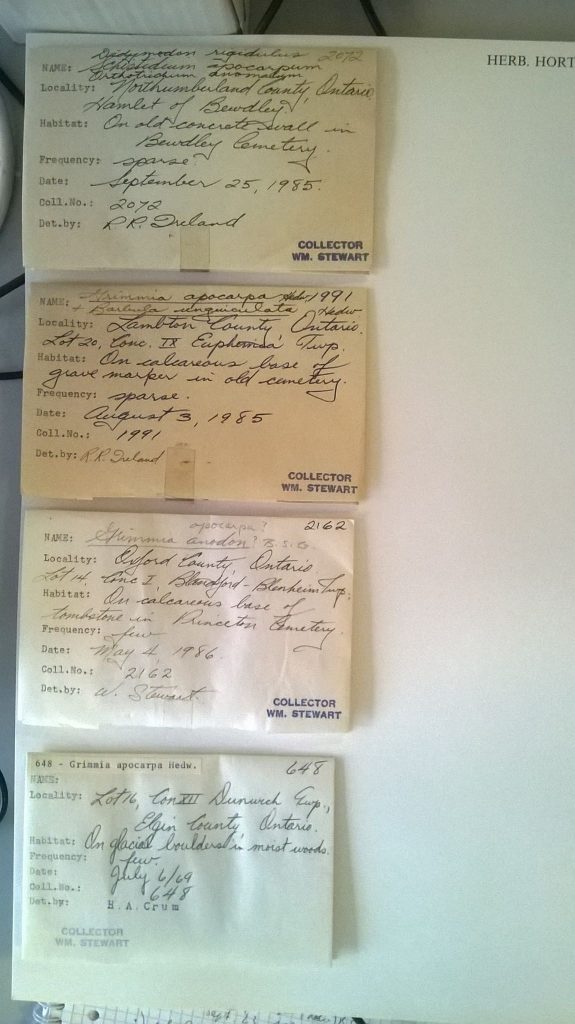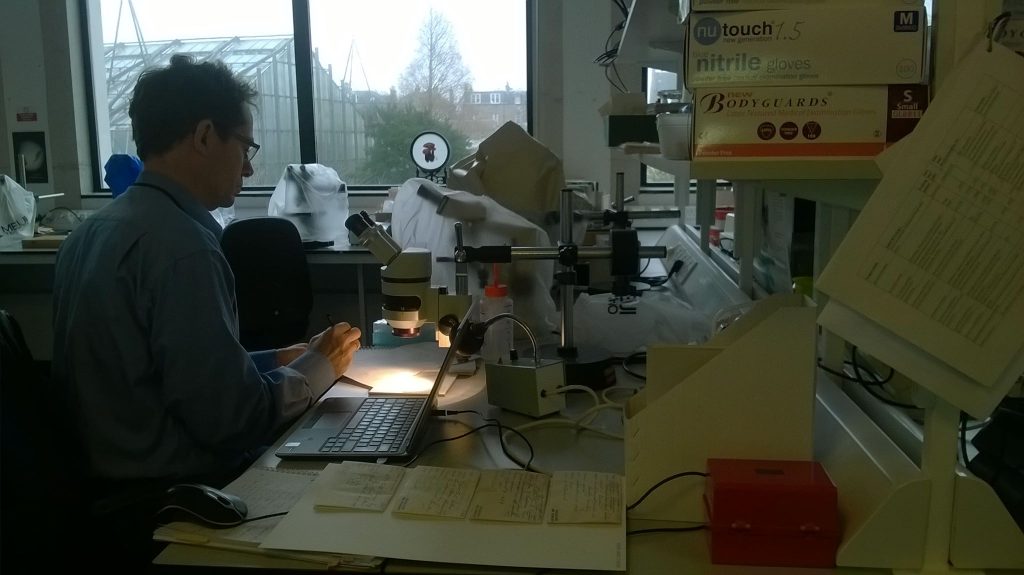Monday 27th March was the start of a month-long visit to RBGE by the Fraunhofer Institute for Building Physics‘s Dr Wolfgang Hofbauer, funded by the EU Synthesys Access programme. This funding enables researchers from other institutes to get their hands on the natural history collections that they need to see and understand, but it is equally vital for collections-based institutes like ourselves, as it promotes the use and curation of some of the material that we conserve.
Wolfgang first visited us at RBGE as part of an earlier Synthesys programme, in 2014, which initiated a very useful collaborative project looking at the growth of species from the moss genus Schistidium on the built environment. We used DNA sequence data to try to identify some of these mosses, because the harsh environment in which they grow means that the plants are often malformed or underdeveloped, and difficult to identify using morphology.
Wolfgang has come back to RBGE in order to continue this work, in part by adding to our “Reference Library” of DNA sequences from different Schistidium species, but also to look at ways of developing our ability to grow some of these mosses where and how we want them.
We hope that by the end of this visit, we will be closer to answering the five following questions:
a) What is the taxonomy of Schistidium diversity on modern building surfaces?
b) Can we show geographic patterns of morphological and genetic variation in Schistidium on modern buildings in different European regions?
c) Are certain Schistidium taxa confined to special ecological situations (material, exposure, etc.) and can we use this for management of moss growth on buildings?
d) Which taxa of Schistidium are the best candidates for moss gardening, and is there potential for specially developed masonry/techniques to facilitate their growth?
e) Does improving the taxonomy of Schistidium on building surfaces allow us to find specific natural antagonists that could be used for its biocontrol?
The outcomes that we would like to see from this work are:
1) A complete baseline DNA-barcode library of Schistidium species as a tool for identification of sterile or morphologically atypical material.
2) Increased insight into the ecology and taxonomy of Schistidium species that grow on modern building structures.
3) A common project with the theme of deliberate growth of suitable cryptogams on building surfaces, as a collaboration between Science and Horticulture Divisions here at RGBE, and the Fraunhofer Institute for Building Physics, where Wolfgang is based.
4) Preliminary information on potentially specific biocontrol of unwanted growth on building surfaces, by identification of the moss lineages involved.
5) Development of an accessioned living collection of Schistidium species that have been identified using DNA barcoding and cultivated at RBGE, to be used for moss cultivation experiments and for public display.
6) Working with RBGE’s bryologists and horticulturalists, the development of a living display of moss colonisation (a kind of “living poster”) that can be used for outreach activities.
7) Published research, both on the DNA barcoding of Schistidium and the diversity of the genus on building surfaces, and also on bryophyte cultivation methods.
Links to reports on Moss diversity in an artificial landscape, an EU Synthesys Access project with Dr Wolfgang Hofbauer at RBGE:
- Building on building mosses, a return to Schistidium in the built environment http://stories.rbge.org.uk/archives/24310
- Volunteering at the Botanics – bryophytes in our living landscape http://stories.rbge.org.uk/archives/24333
- Campylopus introflexus, an invasive alien on the glasshouse roof http://stories.rbge.org.uk/archives/24359
- The trials and tribulations of a moss in the lab: DNA extraction http://stories.rbge.org.uk/archives/24399




Fiona Wood
You don’t mention anything about the mortar and how differences in this could affect the findings